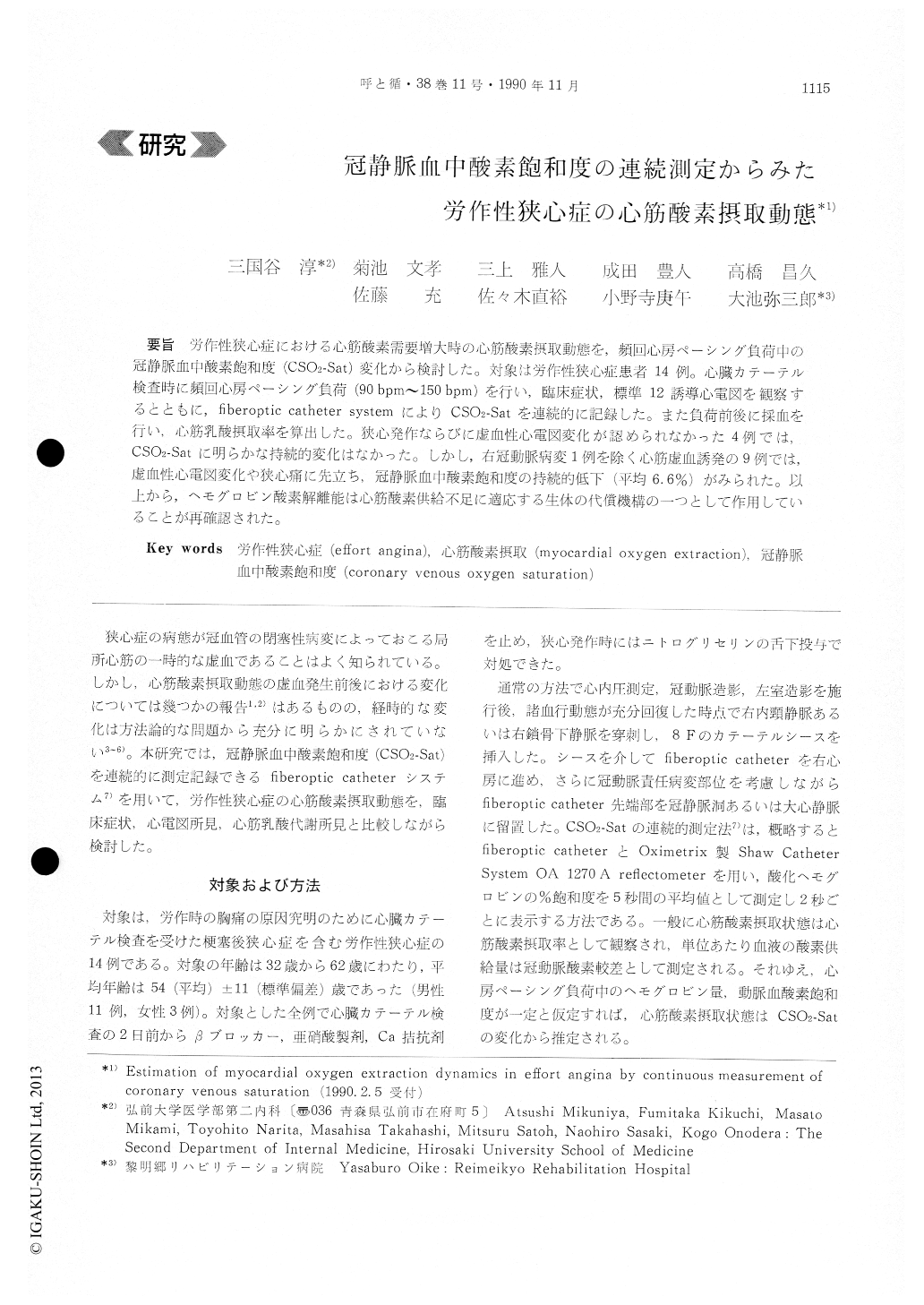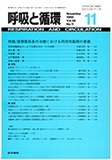Japanese
English
- 有料閲覧
- Abstract 文献概要
- 1ページ目 Look Inside
労作性狭心症における心筋酸素需要増大時の心筋酸素摂取動態を,頻回心房ペーシング負荷中の冠静脈血中酸素飽和度(CSO2-Sat)変化から検討した。対象は労作性狭心症患者14例。心臓カテーテル検査時に頻回心房ペーシング負荷(90bpm〜150bpm)を行い,臨床症状,標準12誘導心電図を観察するとともに,fiberoptic catheter systemによりCSO2-Satを連続的に記録した。また負荷前後に採血を行い,心筋乳酸摂取率を算出した。狭心発作ならびに虚性心電図変化が認められなかった4例では,CSO2-Satに明らかな持続的変化はなかった。しかし,右冠動脈病変1例を除く心筋虚血誘発の9例では,虚血性心電図変化や狭心痛に先立ち,冠静脈血中酸素飽和度の持続的低下(平均6.6%)がみられた。以上から,ヘモグロビン酸素解離能は心筋酸素供給不足に適応する生体の代償機構の一つとして作用していることが再確認された。
To estimate myocardial oxygen extraction dynami-cs in the situation of increased myocardial oxygen requirement, we made a continuous measurement of coronary venous oxygen saturation (CSO2-Sat) using the fiberoptic catheter system and a measurement of myocardial lactate extraction ratio (MLER) in 14 patients. Ten patients showed ischemic ST depres-sion and/or anginal episodes during the pacing load-ing, while 4 patients did not. Although transientdecreases in CSO2-Sat were observed in the non-ischemic 4 patients immediately after the initia-tion of pacing or with the increase in pacing rate. CSO2-Sat and MLER remained almost unchanged from the start of pacing to the time of maximal pacing. However, in the 10 patients who developed ischemia, CSO2-Sat fell from 39.5±1.8% before pacing to 32.9±2.8% at the time of maximal pacing (p<0.05), with an average decrease of 6.6±2.8%. Data of MLER obviously indicated the appearance of myocardial ischemia (32.1±4.7% to 9.2±10.3%, p<O.05).
These findings suggest that myocardial oxygen extracton will increase transiently or continuously to meet the myocardial oxygen demand when in-crease in coronary blood flow is limited. Continuous measurement of coronary venous saturation may be useful for the early detection of myocardial ischemia.

Copyright © 1990, Igaku-Shoin Ltd. All rights reserved.


